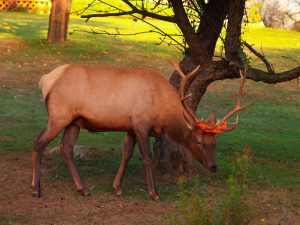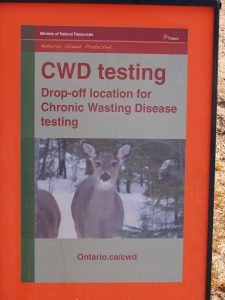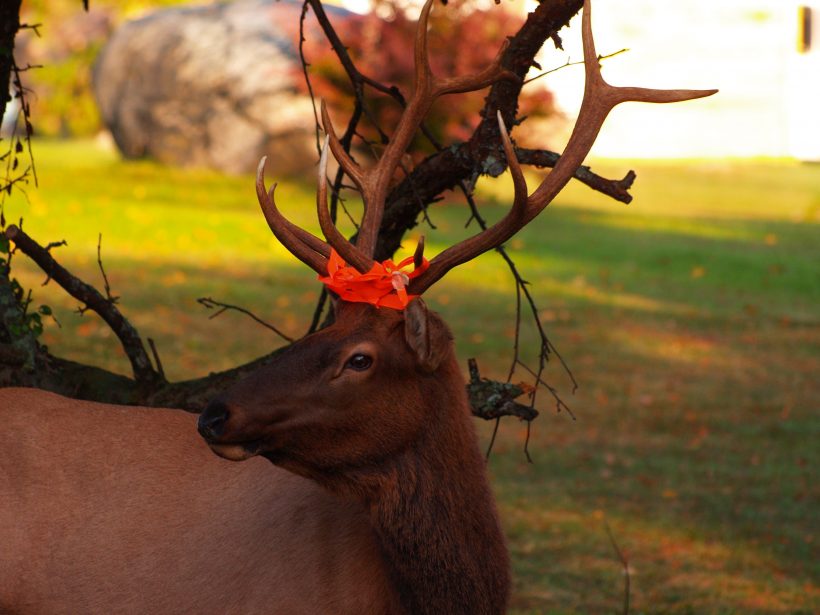ONTARIO’S ELK HUNT
On Tuesday, November 2, 1970, at 10 a.m. Richard Sloat shot one of the last recorded legally hunted elk in Ontario near the former Burwash medium-security prison. Fascinating film records the various animals housed at Burwash such as bison and elk. That is an interesting story on its own.
Sloat had the elk mounted and presently viewers may ask to see it at the Ontario Federation of Angler & Hunter’s Mario Cortellucci Centre. Local taxidermist Kevin Hockley restored that mount circa 2000 before it travelled to Cambrian College, Bass Pro and finally to the Cortellucci Hunting and Fishing Centre. In a manner of pure poetry one of the successful participants in this inaugural 2011 elk hunt will be donating their elk head to the Cortellucci Centre. In fact, the capeing should be completed by now.
Semantics
Semantics, as The Bard would say, are often a case of “much ado about nothing.” Is this the first elk hunt in 100 years? Based upon Richard Sloat’s hunt information – no. But in discussion with someone from the policy division at the MNR I gleaned some insight concerning this debate. “You could take an elk on your deer licence and so that hunt (in the 70s) wasn’t really an elk hunt exclusively.”
In 1888 the open season for deer was shortened to run from October 15 to November 20. The season for moose, elk, reindeer and caribou was closed until 1895. In 1892, an Act to amend the Act for Protection of Game and Fur-bearing Animals passed reducing the deer season to November 1 to 15. That same season would apply to moose, reindeer, elk and caribou in 1895 upon a recommendation by the Game & Fish Commission. Of interest, the last known record of eastern elk in Ontario was made near North Bay in 1893. Of further interest, in 1895, the moose, elk, reindeer and caribou hunt was postponed until 1900 when the season for moose, reindeer and caribou was to be opened and to continue “every third year thereafter.” Elk were not to be taken at all. ( FYI the last reliable sight record of the passenger pigeon in Ontario was made in 1902 at Penetanguishine.)
In 1932 Rocky Mountain elk were re-introduced into Ontario from Buffalo National Park near Wainright, Alberta in exchange for assistance restocking Quebec beaver preserves and for shipments of small mouth bass to Alberta. The first elk were shipped to Pembroke (1932) and in 1933 additional releases of elk went to Burwash, Chapleau and Nipigon-Onaman Crown Game Preserves. (As an aside, in 1943 the first Pelee Island pheasant hunt was held with the first township fee.)
In 1939, according to The Bancroft Times, the Peterborough Fish & Game Protective Association released 14 elk in the Peterborough Crown Game Preserve. Bruce Ranta, who earned his Master’s degree studying elk in Ontario, theorizes that these were first shipped from the west by train then by cattle truck. The Times’ reported that 4 elk drowned, 2 were shot, and 2 died from illness. “Even with these casualties, Carmen Whitmore of Apsley reports he counted 18 in a herd in the Preserve a few days ago.” (That was published in 1942.)
MNR records say that in 1940 6 elk were released in the Peterborough Crown Game Preserve. At that time there were 121 Crown Game Preserves in Ontario.

In 1949 domestic livestock in the Burwash area contained a liver parasite which was blamed on the elk. Over the next 3 years, 300 elk were shot in an effort to exterminate them. Science would later indicate that was an ill conceived plan. Some of the elk escaped to form the nucleus of the French River herd which ultimately attracted Bruce Ranta and sow the seed for further re-introduction of elk to Ontario. Of note, in 1950 an elk (wapiti) hunting season was opened (61 years ago), at first by special permit and in 1951 by including elk on the deer licence. In 1980, the season was closed on elk (31 years ago), “which remain in small numbers south of Sudbury.”
In 1998, 47 elk from Alberta were released south of Sudbury as the first phase in an Ontario elk restoration program. In 1999, 69 elk were released at the same 1998 release site. In 2000, 70 elk were released at the North Hastings Gin orGinn Lake site, 60 near Kenora, 40 southwest of Sudbury joining the 116 previously released there and in 2001, another 48 were released at Ginn Lake before the MNR shut down the releases due to a fear of Chronic Wasting Disease (CWD).
When was the last Eastern elk elk hunt in Ontario? If the eastern elk were last seen in 1893 it seems that short of some miraculous resurrection that will never happen. As for the western elk? You be the judge.

CWD
Ministry technicians were present to gather samples for CWD testing. As readers no doubt know, and those who have received their “doe tags” have been informed, the annual rotating proactive study during our deer season will be in some of the local Wildlife Management Units (WMUs). The technicians surgically removed the brain stem and 2 lymph nodes for lab testing. Of course the elk hunt was exclusively for adult bulls and cows. Although CWD can be in fawn deer it is more prevalent in adult deer. That is why the ministry rejects fawns for testing.
SOME COMMENTS FROM ELK HUNTERS
For many it was the very first time that they had ever heard elk bugle. “This probably was a once in a lifetime experience.” “This saved me the expense of going west to hunt elk.” Even those who held elk seals in WMU 60 where elk could be described more as ghosts – seldom seen if ever – “I wouldn’t have missed this. I wanted to be part of this first hunt.”
AND FINALLY…Drunken moose?
A Swedish moose that gorged herself on fermented apples had to be rescued by emergency services when she became trapped in the fork of an apple tree. A crane was required to bend the tree in order to free the moose. Previously they had tried to free it by sawing off a branch. A hunter stood by should the moose be injured or aggressive. The day after, the moose was reposing in a neighbour’s garden apparently none the worse for the experience.
PS. A resident placed the hunter orange on an elk so hunters would not shoot it. I can’t verify if she was successful.
